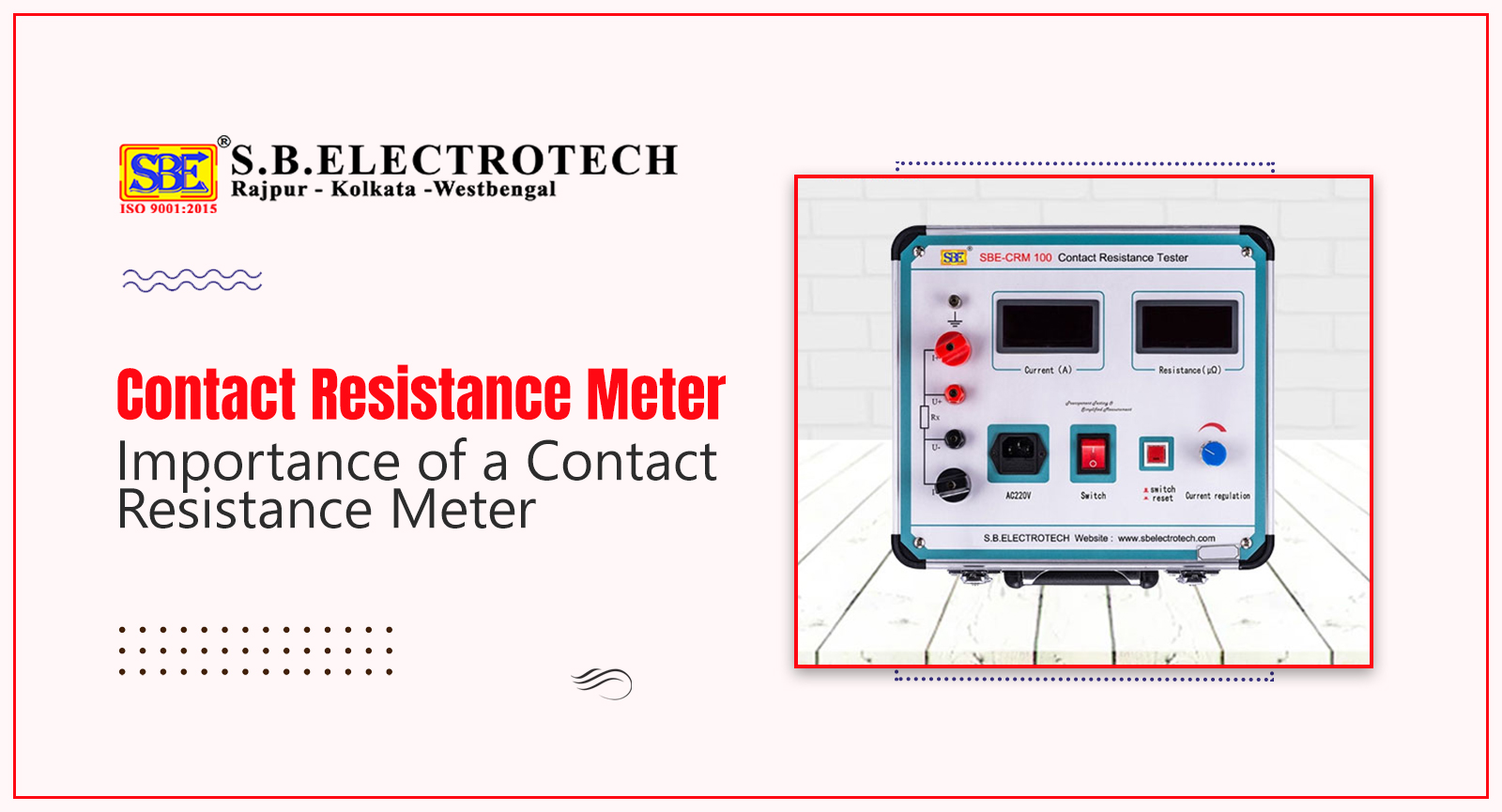A Contact Resistance Meter is used to test switching devices, cable junctions, and other electrical connections. It measures voltage dips, contact resistance, and joint or connection resistance in milli-ohms or micro-ohms.
What is a contact resistance test?
The electrical contact resistance test, also known as Ductor testing, analyses the resistance of electrical connections such as joints, connectors, terminations, and cable connections. It measures either the voltage drop, the resistance provided by the contacts, or the resistance of the joints or connections.
The test measures resistance at the micro- or milli-ohm level and is mostly used to ensure correct electrical connections with a contact resistance meter. The test is performed on connections and joints of current-carrying components to identify the loose connections, and high-voltage drop areas, and to indicate rusted surfaces.
Why would you require a contact resistance test?
It is important to measure the contacts of a circuit breaker regularly to ensure that it is in good working order. Poorly maintained or broken contacts can result in arcing, phase loss, and fire.
This contact resistance test is critical for connections that carry a lot of current (such as switchgear busbars) because increased contact resistance can lead to decreased current-carrying capability and higher losses. The measurement of contact resistance helps identify and remove fretting corrosion of contacts.
Contact corrosion can lead to:
- Loss of power
- Heat generation
- Loss of contactor capacity
- Failure to interrupt the current when necessary.
These issues can result in significant failure. Fretting corrosion at high temperatures is one of the reasons for contact failure, which results in high contact resistance. Different surface coatings and treatments are utilized to increase the corrosion resistance of contact surfaces and tips.
Why Use a Contact Resistance Meter or a Micro Ohmmeter?
A micro ohm meter is important to measure contact resistance because it provides more accurate results than a normal multimeter. Only a microohmmeter can correctly measure the quality of contact resistances.
Routine contact resistance testing is essential for circuit breaker contacts to guarantee smooth operation. Neglected or damaged contacts can cause arcing, phase loss, and fires.
Contact Resistance Meter Manufacturers provide high-quality meters to help diagnose fretting corrosion, and reduce power outages, heat generation, contactor capacity loss, and failure to stop power.
In general, ductor testers fall into two categories:
- The Series Type Ohmmeter features four resistors, an internal battery voltage (E), and two output terminals (A and B). When the A and B terminals are coupled with the R1 and R2 resistors
- Shunt-type ohmmeters are used to measure modest amounts of current resistance. When the A and B connections are closed, the needle reads zero because the current only passes via the resistor RX. When these two terminals are open, no current flows through the RX resistor, hence the reading on the ductor tester is set to infinite.
Conclusion
Contact resistance is an important element in thermal conductivity tests, especially in granular materials. The Contact Resistance Meter is crucial equipment for measuring voltage drops and resistance in various electrical connections. It increases the overall reliability and safety of electronic systems.

S.B.ELECTROTECH
S.B. Electrotech is a company that specializes in manufacturing of electrical and electronic testing and measuring instruments. With years of expertise in this field, we ensure to provide high quality, safe, and sustainable products.




